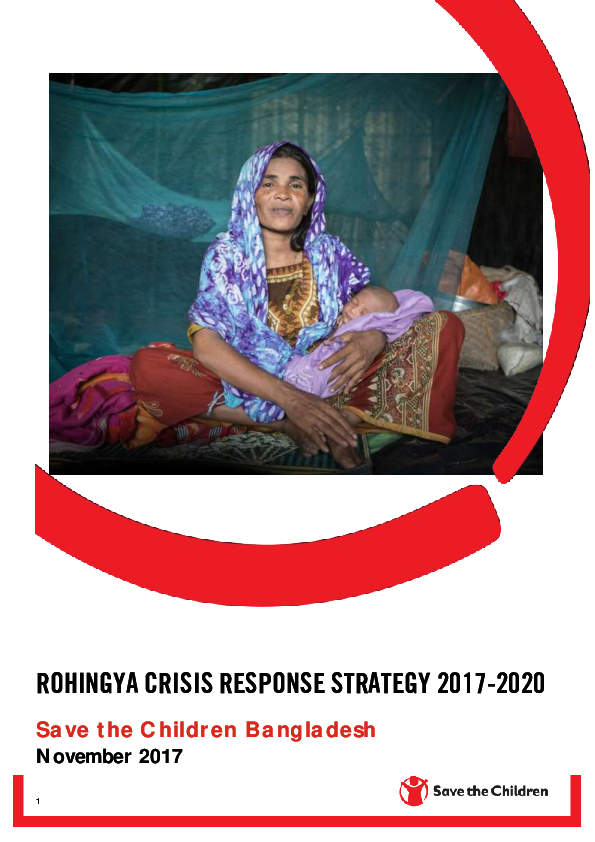
Policies, Standards, and Strategies, Reports
Rohingya Crisis Response Strategy 2017-2020
Publication year:
2017
English
Format:
pdf (263.4 KiB)
Publisher:
Save the Children
Since 25 August, more than 600,000 Rohingya have crossed into Bangladesh, fleeing large-scale violence and human rights abuses in Rakhine state, Myanmar. This new wave of Rohingya refugees adds on to a pre-existing Rohingya community in refugee camps. The Rohingya refugees from this influx, as well as previous waves, are living in spontaneous settlements (most recent arrivals), makeshift camps (previous waves), in registered camps and in host communities.
The needs of the Rohingya refugees (new arrivals, arrivals from previous waves, and registered refugees), as well as host communities, are vast and urgent. They include the immediate need for food support, shelter support, non-food items, safe drinking water, hygiene kits, and access to sanitation facilities. In addition, children are exposed to child protection risks, are unable to go to school, and have limited possibilities to go to a safe space to regain a sense of normalcy. Many of new Rohingya refugees are in need of medical support, as well as mental health and psychosocial support. Host communities in this area are also poor, therefore more strains on existing services and employment are already showing signs of increased tensions.
Save the Children in Bangladesh will aim to achieve immediate and lasting change in the lives of Rohingya refugees, and host-community children and their families through urgent humanitarian assistance, access to basic services and active participation in designing and accessing services that meet their needs.
Read full abstract
View & Download
English
1 Documents
Document information
Publisher
Format
Content type
Country
Region
Rights
© Author/Publisher
Found a mistake? Help us improve!
If you have noticed a document assigned to the wrong author or any other inaccuracies, let us know! Your feedback helps us keep our data accurate and useful for everyone.
Share
Link
